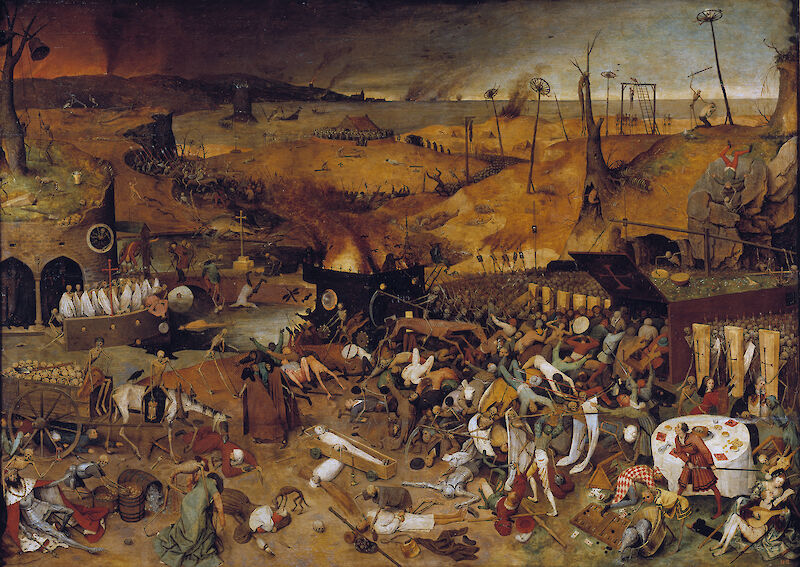


Not to diminish the work of Pieter Brueghel the Elder, but he owes Hieronymus Bosch for The Triumph of Death. In an era of royal portraits and pious depictions of the Christ, Bosch introduced the fever-dream of apocalyptic art, and Brueghel brought his dark flavor to the genre a few years later.
In The Triumph of Death, an army of skeletons sweeps through a coastal farming village. The local peasants are all but defenseless, and man, those skeletons have scythes. The horizon is smudged with smoke from nearby towns, burning. It’s clear, this is the new reality, the skeletons have won.
The Museo del Prado’s description of the work calls it a morality play showing the triumph of Death over mundane things. The inevitability of death for us all. But when you look closely, you can see that death is more than allegory here. In the lower left, a skeleton choir performs under a crucifix. The church is death. To the right, skeletons carry crusader shields. The military is death. They always were.
